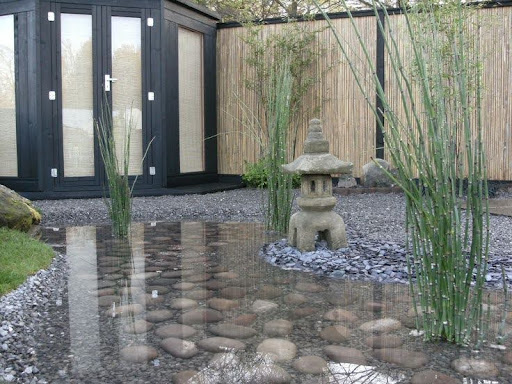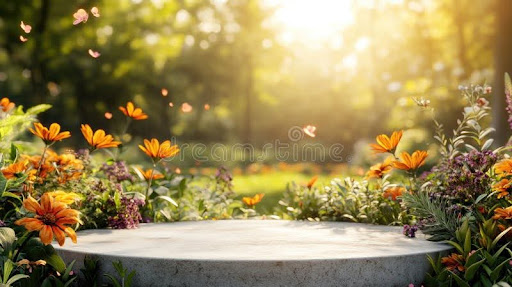The Stylish Gardener’s Guide to Attracting Pollinators
Create a Lush, Beautiful Garden That’s Also a Buzzing Paradise
You don’t need a sprawling meadow or wild acreage to create a pollinator haven—you just need intention, flowers (lots of them), and a little style. On my own homestead garden, from a Brooklyn brownstone to my current food forest, I’ve found that with the right mix of plants and design, you can invite butterflies, bees, and hummingbirds into any space—and make it look beautiful doing it.
Whether you garden for food, flowers, or soul-soothing color, adding pollinator power is one of the best things you can do for your harvest and the planet. Here’s how to do it with both elegance and purpose.
🐝 Why Pollinators Matter (and Why They Love Style)
Pollinators are more than just garden guests—they’re essential workers. Without them, you won’t have tomatoes, squash, cucumbers, apples, or herbs. Pollinators include:
- Bees (native and honeybees)
- Butterflies and moths
- Hummingbirds
- Beetles and hoverflies
But here’s the catch: they’re struggling. Habitat loss, pesticides, and monoculture farming have all taken a toll. Your garden—no matter how small—is a chance to be part of the solution.
And if you do it right? You’ll end up with a garden that’s bursting with color, movement, and vitality.

🌼 Designing a Pollinator Paradise (That’s Also Pinterest-Pretty)
Pollinator gardens don’t have to be messy or “wild” (unless you like it that way!). You can attract bees and butterflies and keep things chic and curated.
Here’s how to design with intention and style:
1. Layer Your Plants Like a Floral Border
Think in vertical layers:
- Tall: sunflowers, hollyhocks, Joe-Pye weed
- Medium: coneflowers, bee balm, yarrow, black-eyed Susans
- Low: creeping thyme, sweet alyssum, oregano
Mix textures, colors, and bloom shapes. Repeating plants in groupings creates that elegant “designer” look—and makes it easier for pollinators to find what they need.
Pro tip: Mass plantings are better than one-offs. Bees love a buffet.
2. Color is Your Superpower
Pollinators are drawn to:
- Blue & purple – lavender, salvia, hyssop
- Yellow – coreopsis, sunflowers, goldenrod
- Red – zinnias, bee balm, cardinal flower (hummers love red!)
- White – alyssum, yarrow, white echinacea (great for nighttime moths too)
Stick to 2–3 main colors and a neutral base to keep the garden cohesive and calming.
🌸 Top Stylish Pollinator-Friendly Plants (That Look Great Too)
Here are a few of my absolute favorites—beautiful, hard-working, and guaranteed to draw a crowd.
| Plant | Pollinators | Bonus Style Points |
| Lavender | Bees, butterflies | Elegant structure and scent |
| Bee Balm (Monarda) | Hummingbirds, bees | Firework-style blooms |
| Salvia (Blue or Red) | Bees, hummingbirds | Upright spires, modern look |
| Yarrow | Bees, beneficial insects | Airy, architectural foliage |
| Zinnias | Butterflies, bees | Color explosion, great cut flower |
| Echinacea (Coneflower) | Butterflies, bees | Drought-tolerant and sculptural |
| Calendula | Bees | Bright, healing, self-seeds like a dream |
| Thyme | Bees | Edible groundcover, softens edges beautifully |

🐦 Don’t Forget the Extras – Pollinators Need More Than Flowers
To truly support pollinators, offer the full spa experience:
💧 Water Source
Add a shallow birdbath or dish filled with pebbles and water. Pollinators need a safe place to land and drink.
🏡 Shelter
Butterflies and solitary bees appreciate:
- Hollow stems
- Unmulched ground (for nesting)
- Brush piles or bee hotels
🚫 Skip the Chemicals
Even organic sprays can harm pollinators. Let your garden find its balance—and welcome a few chewed leaves as part of the ecosystem.

🌾 Mix in Native Plants for Bonus Pollinator Points
While many showy annuals attract pollinators, native plants are their true allies—offering nectar and pollen that local species evolved with.
Some stunning natives that fit beautifully into a stylish garden:
- Purple coneflower (Echinacea purpurea)
- Butterfly weed (Asclepias tuberosa)
- Blue false indigo (Baptisia)
- Wild bergamot (Monarda fistulosa)
Planting even a few natives can dramatically increase pollinator traffic and support declining species like the monarch butterfly.
✨ Make It Yours – Pollinator Gardening with Personality
Pollinator gardens don’t have to look “standard.” Here’s how I infuse mine with personal style:
- Add vintage garden accents – watering cans, terracotta pots, wrought iron fencing
- Use driftwood or stones for natural edges
- Create a pollinator nook with a bench or swing nearby
- Let some herbs bloom—flowering thyme, mint, basil are pollinator favorites
Blend edibles and ornamentals—squash blossoms, chive flowers, and fennel fronds bring in the bees and the dinner

🧘♀️ The Garden Zen of Pollinators
There’s something deeply peaceful about sitting in the garden and watching pollinators work. A bumblebee’s hum, the shimmer of butterfly wings, the flit of a hummingbird—it’s garden meditation in motion.
And the best part? The more you welcome them, the more your garden gives back. Bigger harvests. Healthier plants. A deeper connection to the ecosystem around you.
This isn’t just about planting pretty things—it’s about planting with purpose and beauty hand in hand.
Final Thoughts from My Flower-Filled Path
Attracting pollinators is one of the most joyful things you can do in the garden—and doing it with style makes it even sweeter. Whether you’ve got a balcony of pots or a backyard bursting with blooms, your space can become a sanctuary, both for you and the buzzing friends who help it thrive.
So plant boldly, colorfully, and with care. Watch the bees dance, the butterflies glide, and the garden truly come alive.
And remember: the more beautiful your garden feels to you, the more inviting it becomes to everything around it.
🌼 Happy planting,
—Susan

